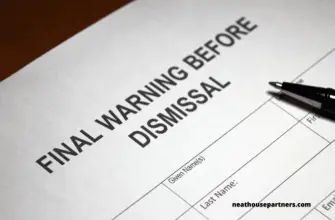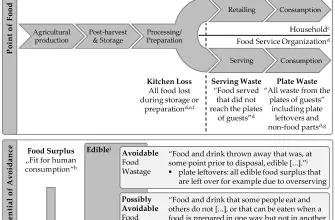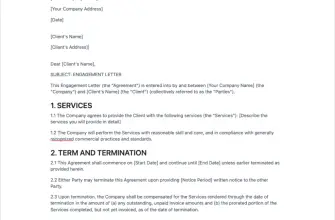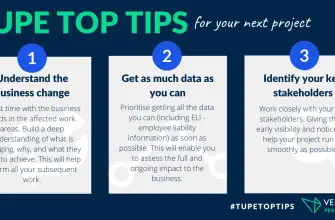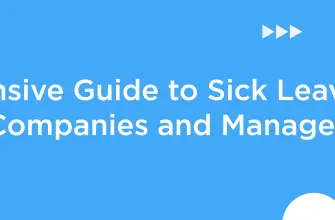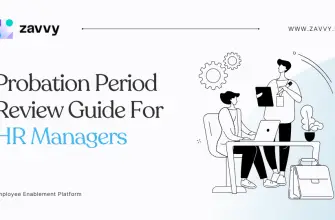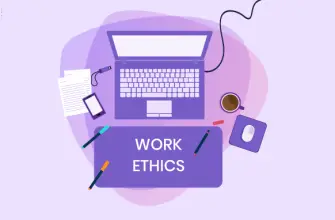The government enacted the Equity Act of 2010 to safeguard workers. This law prohibits Associative discrimination in the workplace based on nine different factors. In other words, you can’t look down on or otherwise discriminate against a worker because of the above categories. Even if the person you discriminate against does not share the protected trait, you can still treat them unfairly. This type of judgment is known as associative discrimination. Claim costs can devastate a company’s bottom line and public image, so taking preventative measures is essential.
Let’s define Discrimination by association and look at some real-world cases.
What is Associative Discrimination?

However, an individual with a protected characteristic is not always the target of discrimination. A person’s association with someone with a protected trait can also make them a target of discrimination.
Associative discrimination occurs when one individual is discriminated against because of the protected characteristics of another. Their associate may be a friend, child, spouse, parent, or anyone under protected characteristics. Discrimination by association occurs, for instance, when a business refuses to employ a parent because that parent has a disabled child. If the parent believes their child’s handicap was the sole reason they were not hired, they can file a claim with a tribunal.
Types of Associative Discrimination
Two types of bias exist: overt and covert. Now that we’ve discussed associative discrimination let’s dive into the nature of direct prejudice and how it manifests itself.
Direct Discrimination.
This is the Practice of Discrimination Against Certain Groups. It is when someone is treated differently due to their identity. If you don’t promote a qualified minority candidate because of their ethnicity, you discriminate against them. That’s the very definition of bias.
Discrimination by Perception

It is a different type of Perceptive discrimination. One example is when a person is treated differently because another person has an inaccurate assumption that they truly share a protected characteristic.
Indirect Discrimination
To discriminate indirectly means that a policy or practice that benefits most people is biased against those who share a protected trait.
Discrimination by Harrasment
A person is harassed if subjected to unwanted, offensive behavior because of a legally protected trait.
Discrimination by Victamization
Treating someone badly because they spoke out against prejudice or harassment is known as victimization.
What are examples of discrimination by association?
Knowing some real-world applications of associative discernment is crucial. This is because learning from others’ experiences will help you prevent making the same errors. This sheds light on their genesis, highlighting potential hotspots for prophylactic intervention. The employee, worker, or job candidate may be subject to associative discrimination if they are related to someone with a protected characteristic, such as if they are the parent, child, spouse, caretaker, or friend of that person. Your connection with the other individual is also not required to be permanent. It can also develop in the context of other kinds of behavior.
1. A Child’s Responsibility in Providing for an Aging Parent
Age is a Qualified Age Discrimination Protection Factor.
Laura takes care of her elderly parent at home. As there are no set working hours at her office, there are times when she must either arrive late or depart early to tend to him or bring him to appointments. Even though many of her coworkers also have small children and regularly have to take breaks to tend to them, only Laura has been disciplined for doing so. She may be a victim of age-based associative prejudice if she is not afforded the same privileges as her contemporaries.
2. Sexual-oriented Associative Discrimination
Prejudice based on a person’s sexual orientation is one form of associative discrimination. An employee and their supervisor are chatting casually about their weekend plans. Someone at work suggests attending a gay pride parade.
The supervisor is aware that the employee does not identify with the LGBTQ+ group but still treats them differently from the rest of the staff. If the manager treats them differently because of their membership in the LGBTQ+ group, this is an example of associative discrimination, which is illegal under employment law. Although they do not identify with the LGBTQ+ community, many of their friends do, and they have legal protections to avoid harassment because of their friends’ sexual orientation.
3. Discrimination based on the assumption of race
Sarah runs into her manager while out buying, and they discuss her upcoming promotion at work. The two of them, her manager and black lover, are introduced. Afterward, Sarah notices a change in her manager’s attitude toward her, and her replacement is promoted instead of her.
Sarah may allege that she was subjected to cognitive bias in this situation. Her manager’s unfair treatment of her (not promoting her) begins only after she meets her beau. Since Sarah’s partner is black, she may claim she is discriminated against based on her boyfriend’s race.
4. Illustration of Disabled Persons Being Subjected to Associative Discrimination
A mother was guaranteed a raise by her employer. After that, she drops the bomb on her boss during an otherwise innocuous conversation: her daughter has a disability.
After learning this, the manager decides to rescind the raise because the mother will be unable to give her full attention to the job due to her guilt over neglecting her daughter.
Given the mother’s disability, this situation would be viewed as associative prejudice in the workplace.
5. Transgender Adoption by a Daughter
Quality that must be preserved: Transformation of Gender. Tom worked at a car assembly plant for many years and became well-liked by his colleagues there. Tom’s daughter has recently undergone a procedure to confirm her desired gender.
He backs his daughter up and tells his coworkers the news, to which they respond in various ways. After that, he is made fun of by his colleagues and left out of social events because of his daughter.
Is it possible for Workers to File a Claim of Associated Discrimination?
Although not explicitly addressed in the Equality Act of 2010, the Thompson v. London Central Bus Company Ltd case did begin to broaden the definition of associative discrimination to victimization.
The Employment Appeal Tribunal (EAT) ruled that the lower court erred in dismissing a claim of “victimization by association,” and that such claims are, in theory, permissible under the Equality Act of 2010.

The bus driver at issue in this instance was let go by LCB Ltd for sharing his high-visibility vest with a coworker. He was reinstated after appealing the initial decision to fire him, which he saw as retaliation. The bus driver’s case hinged not on whether or not he had committed a protected act but on whether or not he had suffered an injury due to someone else’s protected action. The bus driver claimed he informed his boss about an overheard discussion in which other workers (also members of his trade union) accused the company of violating the Equality Act. After this point, the bus driver claimed that his manager began associating him with the other workers and their protected conduct, which led to negative consequences for him (i.e., his dismissal).
The panel dismissed the claim at the preliminary hearing stage because it had no chance of success. After the bus driver filed an appeal, the EAT ruled that his claim of victimization “by connection” should not have been dismissed. According to the EAT, the employer’s treatment of the employee was unfavorable because of the employee’s membership in a trade union that had protested against protected actions. That decision should have been made after hearing all the evidence.
To be clear, this ruling does not have any precedential value before other Employment Tribunals. Still, it proves that victimization based on social connections exists.
Factors to Consider that are important for Employees
Employers must adjust their policies to keep up with the changes and meet their company’s demands. To prevent claims of indirect associative disability discrimination, employers should review any new policies in light of this decision and make exceptions where necessary.
Before making any adjustments to a policy, businesses should think about things like
- What are the goals of the policy?
- Would this policy disproportionately negatively affect individuals with one or more characteristics protected by the Equality Act of 2010?
- Is there another method to reach the same goal that would have a smaller negative impact on people who share the identified protected characteristics?
Employers and workers can seek guidance from the Employment team before implementing a policy that could discriminate against some people because of who they are or what they believe.
Methods for Reducing Associative Prejudice in the Workplace
While prejudice is generally well understood, many people remain oblivious to discrimination by association. Even if it’s intended as “banter,” a remark about an employee’s personal life may offend them if they’re connected to someone with a protected characteristic. Many workers prefer to keep their personal life separate from their work life.
Fortunately, you can take action to lessen your vulnerability to associative prejudice on the job.
The first step is to provide ongoing diversity and equity training for employees. Discrimination by association should be a central topic in this training, given to all employees, not just managers. Once aware of the principle and the potential consequences, most people will try to avoid associative discrimination.
You should also ensure that your anti-discrimination strategy is current and addresses discrimination by association. All employees must be acquainted with this policy and can review it after revisions.
How to handle the Claims of Associative Discrimination?
A complaint that an employee is being treated unfairly because of their attachment to another person with a protected characteristic should be investigated like any other discrimination claim.
Although it may be difficult for an employee to prove associative discrimination in front of an employment tribunal, you should still look into the situation to see if the accusations have any basis.
If you and the employee can resolve the issue amicably and without resorting to legal proceedings, you can restore a good working relationship for the future.
A complaint of associative discrimination is serious business, and you should consult with an employment law attorney as soon as feasible if you find yourself in this position. This will aid in defending your company against any claims of discrimination brought before a commission.
How much does going to court for a workplace discrimination dispute typically cost?
Taking a boss to arbitration is free of charge. However, if you lose the case, the court may order you to cover the employer’s legal fees. To prevent this, you should carefully consider your case, always tell the court the truth, and avoid giving them false information. Justify your legal position well and follow the judge’s orders.
Frequently Asked Questions about Associative Discrimination
Is it fair to call associative prejudice “direct” discrimination?
A type of direct discrimination, yes, is associative discrimination.
In What Ways Are People Equal?
Equality implies making sure that everyone has access to the same resources. This might occur in a classroom, workplace, or regular living. Each individual, regardless of race, creed, sexual orientation, gender identity, or any other factor, deserves the same chances in life as everyone else.
Exactly how does discrimination by association manifest itself?
Being unfair to someone because they are the parent of a disabled or transgender kid is an example of associative discrimination.
To what extent does the workplace allow for positive discrimination?
Positive discrimination is a strategy that some companies use to promote equity. This refers to giving someone special treatment because of a legally protected trait. For instance, a company may decide to expedite the screening process for people from underrepresented groups. In most cases, hiring preferences considered “positive discrimination” is intended to raise the proportion of minority group members among a company’s workforce.
Define Associative Discrimination.
It is known as associative discrimination, when one person is treated unfairly because of their association with another person with a protected trait.


